As we wrap up our 30th year, we’re celebrating and looking forward to what’s on the next horizon for IBO! We’re excited to share with you just a bit of what we have in the works for the coming season, and how you can get involved as we work to accomplish our research, outreach, and conservation goals.
Valley Fire Recovery Plans

In November, over 70 volunteers, including many IBO friends, joined the Idaho Department of Fish and Game (IDFG) to plant seedlings in the Valley Fire burn area. It gave us so much hope to see new growth emerging on the scorched hillside where our hawk blind once stood. We’re partnering with IDFG to recruit volunteers for ongoing habitat restoration. Sign up here if you’d like to join them!
We’re also pursuing grants for research projects to study the fire’s impact on birds and their habitat, with plans to support graduate research on how wildfires affect bird migration in the western U.S. As the snow melts this spring, we’ll work with IDFG to determine when it’s safe to access the site, and we’ll begin monitoring bird recovery when we can. Thank you for your continued support!
Hummingbird Research: Our Plans for 2025 and beyond
By Heidi Ware Carlisle and Heather Hayes
2024 marked an exciting year for our hummingbird research in Idaho at two locations! We returned to Jennifer Alban’s home in Idaho City to complete our 13th year of monitoring, where we recorded 267 hummingbirds. Among our exciting encounters this year were 39 recaptures, including…

Read more to learn about our future at Bogus and beyond
two 5-year-old female Calliopes, and two 5-year-old female Black-chinned!
Scott Tuthill led our Bogus Basin volunteers this year as they maintained feeders and monitored hummingbird numbers. Thanks to their efforts and the collaboration of Bogus Basin’s Sustainability and Stewardship team, our banding team was rewarded by two exciting late-summer mornings of banding, with 99 hummingbirds banded, 5 different species, and enthusiastic groups of visitors!

In 2025 we hope to expand our research and host more public banding events at Bogus Basin. Seeing how successful our test runs are, we’d love to offer more of these events and invite visitors from the wider Treasure Valley community to join us! These events are made possible by your support. Please consider donating to our hummingbird research fund to help us get the funding we need to expand this program. Stay tuned for our spring news blast for more details and dates, and we hope to see you out there!
IBO Students Visit Spain Thanks to NSF Funding

We teamed up with Fundación Migres to send six students to Tarifa, Spain this summer. There, they studied raptors as part of a National Science Foundation International Research Experience for Students (IRES) project. Students were mentored by Spanish scientists, conducted field work, and received an ample dose of cultural immersion in the vibrant city of Tarifa.
Read about their research, centered on the theme of raptor migration and climate change, and hear about their experiences in this program in our full length article here. We’re currently accepting applications for the 2025 cohort.
Announcing IBO’s Newest Biologist Colin Jensen
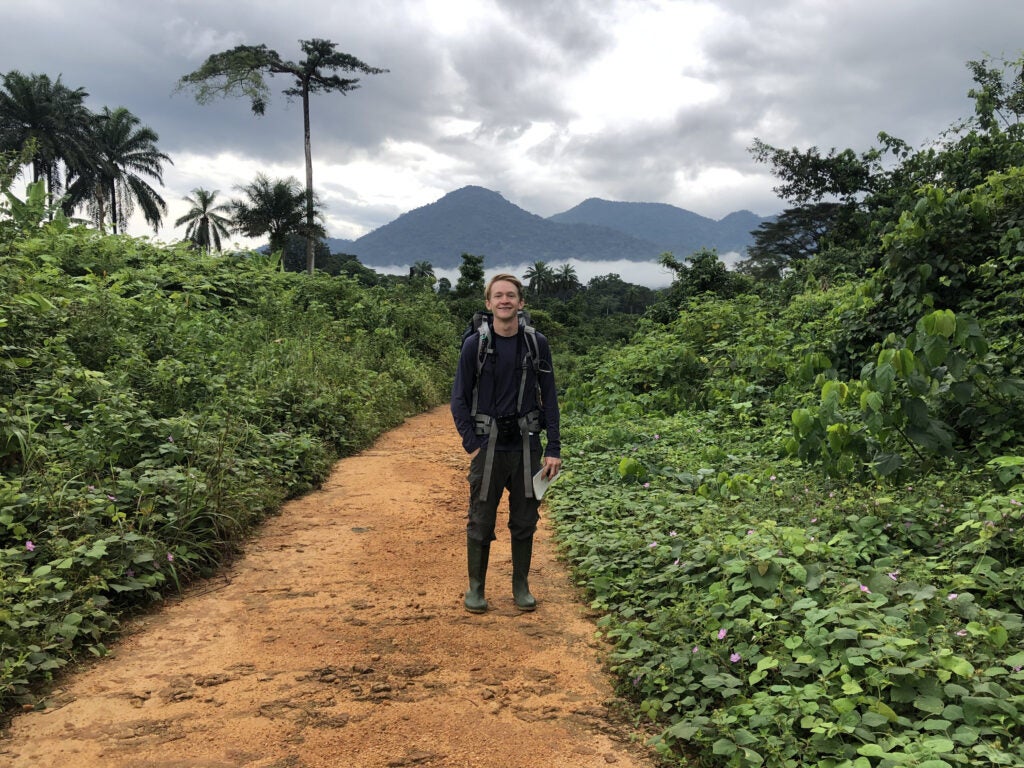
By Jay Carlisle
We’re excited to welcome another biologist to IBO’s research team! We asked Colin to share a bit about himself and why he decided to join IBO:
Colin shares: “I recently finished a master’s in Nature Conservation from the University of Göttignen in Germany. A major part of my degree was focused on studying Afrotropical forest hornbills, particularly looking at survey methodology and the impact of hunting on populations. Much of my other experience in recent years has also been abroad, where I have enjoyed working at banding stations and studying migratory birds.
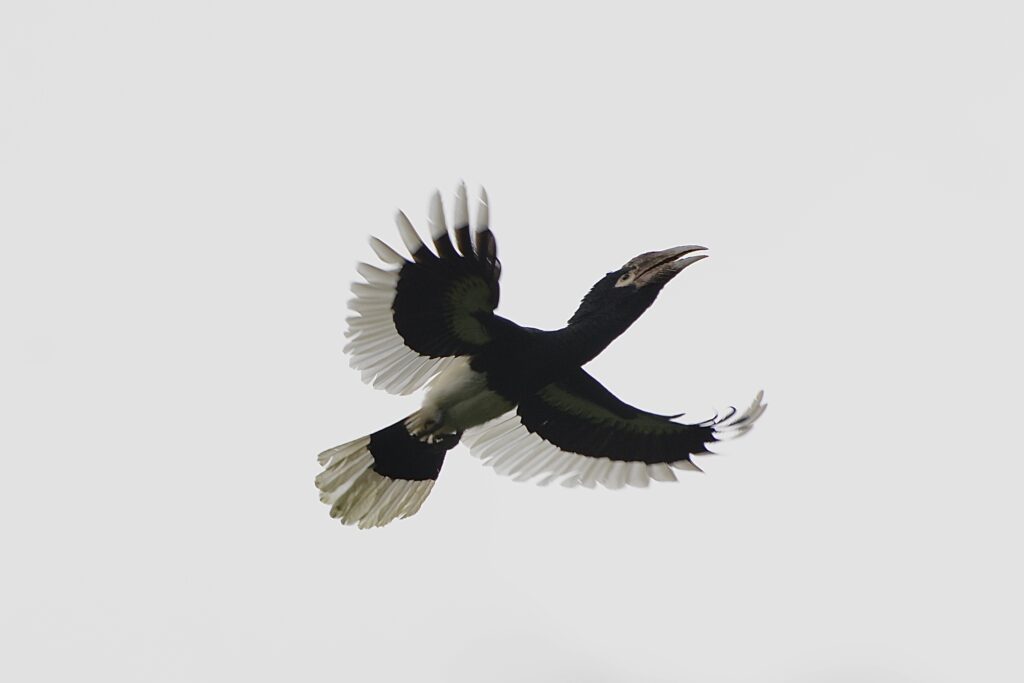
I consider myself somewhat of a research generalist, as I find almost all aspects of avian biology fascinating – but I am particularly interested in migration dynamics, behavioral ecology, and conservation. My time abroad has taken me to some truly incredible corners of the world, but at the same time has helped remind me how much I love my roots. I am originally from southeast Idaho, and can attribute my love for birds and conservation to the awesome nature I was lucky enough to grow up in. I am excited to start this position at IBO, and for the opportunity to meet new people, learn new things, and experience new parts of the place I call home.”
Pines and Nutcrackers: A Keystone Connection
By Lesley Howard and Cale Kennamer

Whitebark pine, a threatened and important species found high in Idaho’s mountains, is a tree that has coevolved with the boisterous Clark’s Nutcracker. whitebark pine is an important food source for the Clark’s Nutcracker, and the nutcrackers in turn help plant new whitebark pines when they cache the seeds. During the late summer months we embarked on a second year of surveys in whitebark pine habitat, thanks to funding from USFWS and logistical support from many partners. This year our two technicians surveyed 15 sites across the Salmon-Challis and Sawtooth National Forests (compared to 8 sites last year). We observed…
Read more on their research findings
806 Clark’s Nutcrackers this season and were able to document them feeding on and caching seeds, using a variety of vocalizations, and perching in whitebark pine 77 times! We hope to continue our survey effort and grow to other areas in the state with whitebark pine!

Here’s some perspective from one of our field technicians this summer: “These surveys offered a unique opportunity to observe the evolutionary relationship between whitebark pine and Clark’s Nutcrackers. All our survey locations were in alpine environments at or near treeline, but we saw large differences between locations in the way the nutcrackers interacted with the pines. By recording this variation among different whitebark pine communities, I hope our work will provide high-resolution data that helps us understand how this variation affects these two species in different areas across the continent. My research interests revolve around studying the effects of anthropogenic environmental change in alpine environments and using this information to inform effective conservation actions. Working on this project provided a rewarding opportunity to further those interests.” ~ Cale Kennamer

Graduate Student Updates
Anna Connington

Anna is primarily advised by Todd Katzner at the USGS, with Jay serving as her co-advisor. Her work is part of the NSF-IRES project, co-led by Greg and Jim Belthoff.
She shares: “I am super stoked to start my Master’s degree in Raptor Biology studying birds on the stunning coast of southern Spain, at the Strait of Gibraltar.
My graduate research will focus on the impact that extreme weather caused by climate change has on the relationship between migratory bird species and wind turbines. I cannot wait to dive further into my project as my study area provides a unique opportunity to further the understanding of interactions between wind-energy development and wildlife.”
Jessy Wilson
Jay serves as Jessy’s MS advisor

She shares: “Summer 2024 was the pilot field season for my Master’s research on nest microclimates experienced by American Goshawks. We deployed over 80 thermologgers in known goshawk nest structures and each thermologger will stay out in the field for the next year, collecting temperature data at each nest every 15 minutes.
IBO’s Team Goshawk worked extremely hard to get this work accomplished in addition to the annual monitoring responsibilities, and we had a wonderful summer together. After working hard solving some technically difficult ground-based deployments and climbing occupied goshawk nests to deploy thermo-loggers from 70 feet off the ground, we are so excited to see what data we get back from all these sites next summer!”
Will Loftin
Jay serves as a co-advisor for Will’s PhD along with Megan Cattau

They share: “Are Idaho’s endemic birds feeling the heat? As part of my PhD research, in conjunction with the Sawtooth National Forest, I’m investigating how microclimate is affecting the rare Cassia Crossbill by deploying thermo-loggers in lodgepole pine stands. Previous research suggests high summer temperatures cause lodgepole pine cones, the crossbill’s primary food source, to open prematurely allowing other species to access the seeds.
To better understand how microclimate influences premature cone opening and crossbill activity, IBO deployed 25 loggers earlier this year to collect preliminary data and we plan to deploy 70 additional loggers next summer.”
The Side Channel Crossing is Here!
By Heidi Ware Carlisle
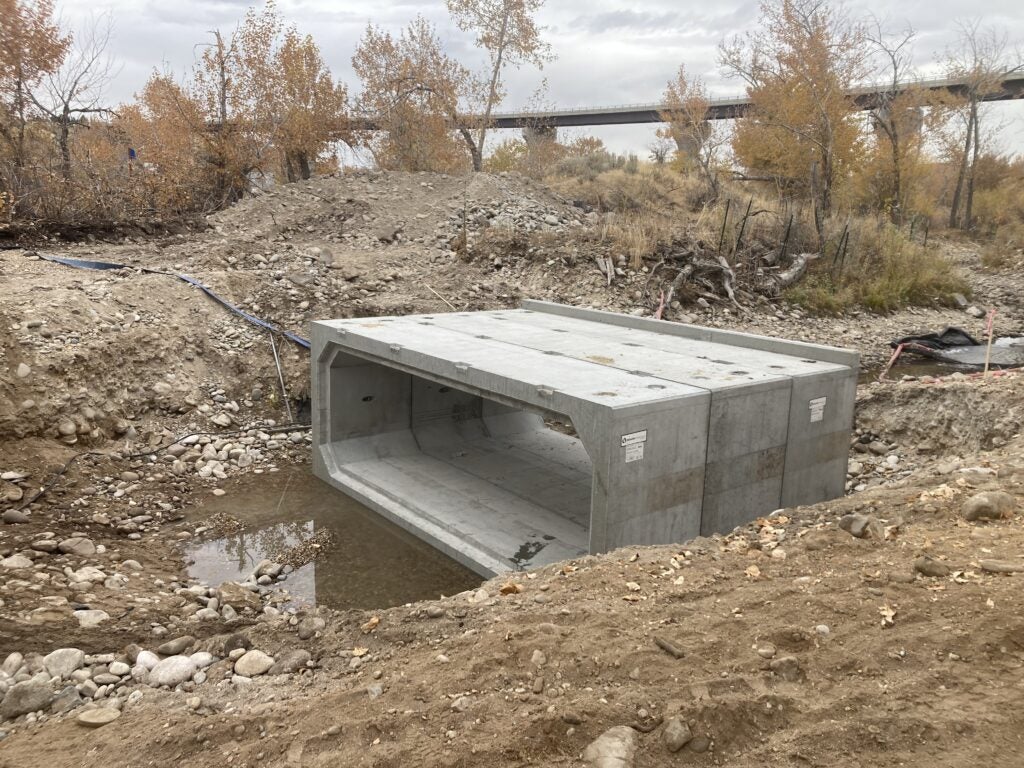
For biologists who are used to the speedy spring migration of neotropical migrants, or the whiz of wings as a Peregrine Falcon passes by, we have to admit that the permitting process for crossings at the Diane Moore Nature Center was not quite what we were expecting. But, we are so excited to finally share that the crossings have been manufactured and installation began on October 28th! Construction should last about six weeks, and the area will be closed during that time. Crossings will allow public access from the Greenbelt at both ends of the property, allowing visitors to move through the Nature Center and enjoy all it has to offer.
Join us for a special “ribbon cutting” celebration as we officially open the new crossings at the Diane Moore Nature Center! Wednesday, December 18 at 3 p.m. Get more information and RSVP at this link.
Army Corps 1135 Project In Barber Pool
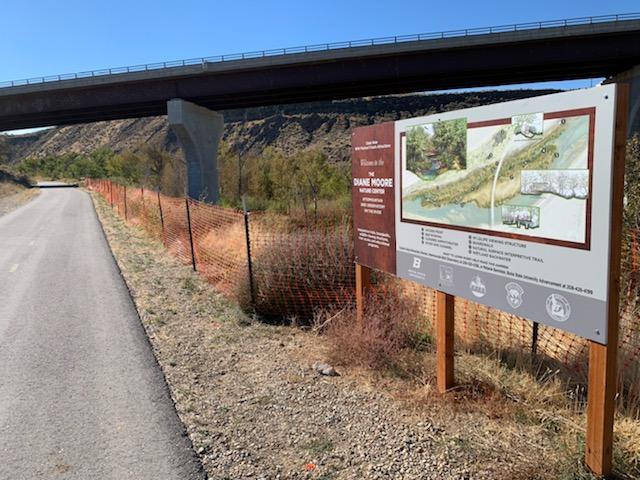
By Greg Kaltenecker
This year I’ve been leading a coalition of local partners to work on an exciting new project to restore the Barber Pool ecosystem next door to the Diane Moore Nature Center. The group includes the City of Boise, Micron, Harris Ranch Wildlife Mitigation Association, Idaho Department of Fish and Game, The Nature Conservancy of Idaho, Boise Valley Flyfishers, Golden Eagle Audubon Society, Merrick and Company, and the Idaho Foundation for Parks and Lands. Partners have all…
Read more on this exciting update
contributed toward meeting the non-federal matching requirements for the Feasibility Phase of this US Army Corps of Engineers 1135 Project, and I’m happy to say that we have almost reached our goal! This is the opportunity of a lifetime to leverage local resources to unlock millions of dollars of federal funding for ecological restoration along the Boise River.

We are seeking to expand our coalition of local partners to raise awareness about this opportunity throughout the community, and are seeking donations and commitments towards the project’s implementation phase. More than $3 million dollars of non-federal matching funds will be needed for this phase, during which up to $10 million dollars of federal funding could be spent to improve fish and wildlife habitat, restore historic river function, and create access and recreational infrastructure for the public.
Please contact me for more information. gregorykaltenecker@boisestate.edu
Making Windows Safer For Birds at Boise State
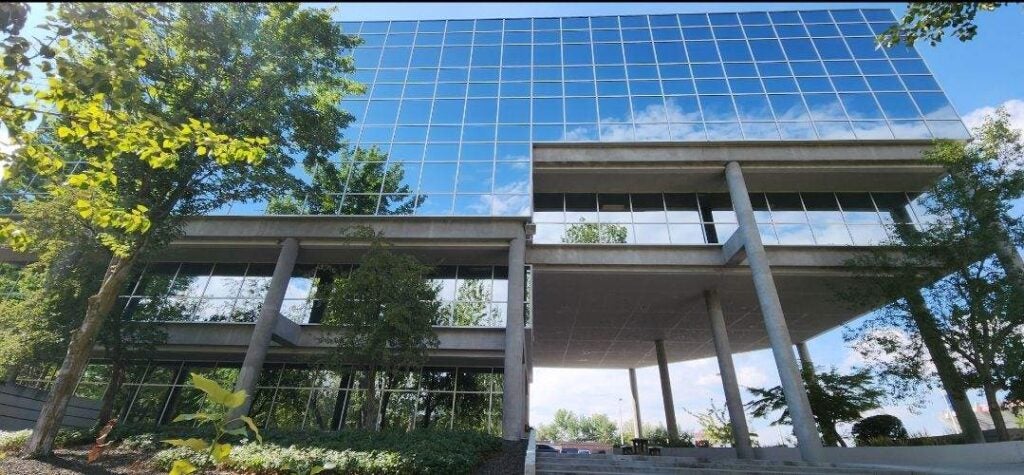
This fall, IBO’s Vertically Integrated Project (VIP) student, Mariah Hoel, led a team of students in documenting bird window-strike fatalities on Boise State’s campus. After identifying problem windows, Mariah’s research team collaborated with art majors from the “Applied Projects in Graphic Design” course to come up with a solution. The students are designing artistic vinyl decals that will make select windows at the Center for Visual Arts more bird-friendly. We’re excited to hopefully install these decals in the spring and evaluate their effectiveness during the spring migration! You can read more about this project in this Boise State magazine feature.
New Publications This Year
Aberg, M. C., S. E. Coates, Lucian Davis, B. W. Wright, R. L. Mervin, and Jay Carlisle. 2024. Impacts of outdoor recreation on multiple levels of a fragmented sagebrush-steppe ecosystem. Journal of Wildlife Management
Miller, Rob, ZP Wallace, RC Skorkowsky, JA Blakesley, M Mika, JB. Buchanan, Jay Carlisle, and M Green. 2024. Flammulated owl occupancy, detectability, and forest use during the breeding season in the western United States; a meta-analysis. Forest Ecology and Management
Russell JM, Rob Miller, Jay Carlisle, Greg Kaltenecker. 2024. Modeling pinyon pine distribution in the northern Great Basin, USA. Environmental Conservation
Sidran, M, Rob Miller, N Bickford, B Maxfield, B Williams. 2024. Metapopulation Genomics of American Goshawks in the Intermountain West of the United States. ESS Open Archive.
Plus this feature article about the Vultures of Gorongosa National Park written by IBO’s recently-fledged grad student, Rebecca Bishop.

This article is part of our 2024 end of the year newsletter! View the full newsletter here, or click “older posts” below to read the next article.
Make sure you don’t miss out on IBO news! Sign up to get our email updates.